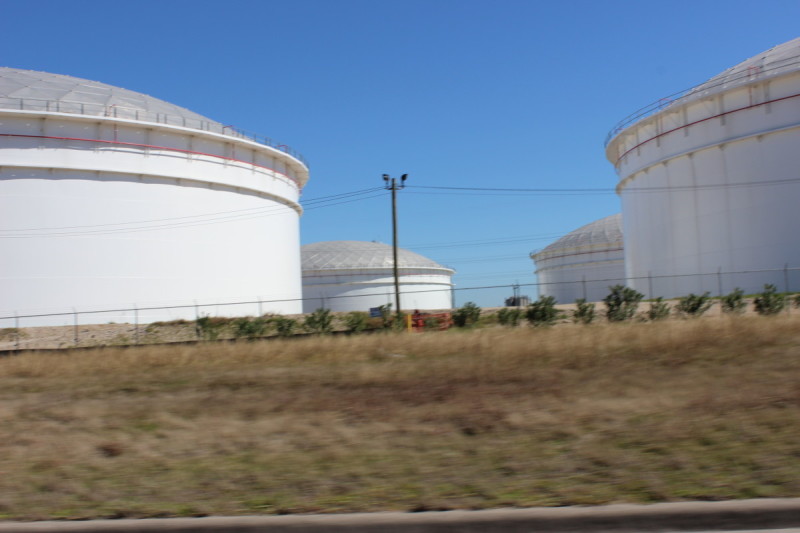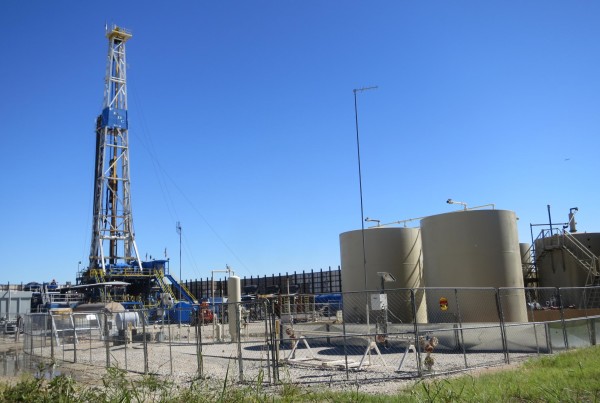This story originally appeared on Houston Public Media.
In Houston, at a time when oil drillers are firing workers, companies that pipe and store crude are busier than ever.
“The Houston area has become the Grand Central Station of the South,” says Andrew Lipow, a former oil trader and now industry consultant in Houston.
“We’re seeing a significant increase in storage capacity both above ground and below ground,” Lipow tells Houston Public Media.
How significant is the increase? As Lipow adds it up, the amount of crude oil stored in around Houston is about 66 million barrels at the moment. But in a few years?
“We could end up with over 100 million barrels of storage in the Houston area given what’s in existence today, what’s under construction, and what’s being proposed,” says Lipow.
There are storage projects underway across the city. One is easy to see: a hugetank farm under construction along Beltway 8 near the Houston Ship Channel.
Closer-in but harder to spot is a project a couple miles southeast of NRG stadium. Instead of above ground tanks, underground caverns are being readied to start taking on some 20 million barrels of crude beginning later this year.
Crude will flow to these projects through a network of newly expanded pipelines running to Houston from oil fields in South and West Texas as well as from North Dakota, Wyoming, Colorado and Canada.
Crude also arrives by rail car and tanker truck. Millions of barrels of the crude has to be stored until it’s used in refineries at the rate of 2.6 million barrels a day.
Which raises a point of concern, aside from a catastrophic spill: Is there an environmental impact from so much oil simply flowing through and being stored around Houston?
Yes, says Eduardo Olaguer at the Houston Advanced Research Center.
“These are not obvious events. They’re basically invisible vapors,” says Olaguer.
Olaguer and his colleagues just published a study based on air monitoring they did. They drove three vans packed with high-tech chemical sensors around neighborhood streets in Galena Park and Manchester on Houston’s eastside.
“You have a lot of underground pipelines and storage tanks. So it was an ideal place to go find stuff,” says Olaguer.
The stuff he said they found were spikes of benzene vapors. Benzene is a chemical linked to cancer and is found in crude oil.
Olaguer said they found benzene in the air at levels that were nearing limits on what’s considered safe for short term exposure and that were far exceeding limits for long term exposure. He said the benzene levels correlated with the times when crude and other related products were being transferred to and from tanks at terminals along the Ship Channel.
He said they also found a correlation to where pipelines ran through the area.
“This was something of a surprise to us. And we think it has very important implications for state and local officials who are in charge of protecting the health of neighborhoods,” says Olaguer.
The Texas Commission on Environmental Quality (TCEQ) told us it will review the study.
One of the biggest terminal operators and one that was cited in the study is Kinder Morgan. The company told us in an email that it has invested millions of dollars and has worked with the TCEQ to reduce oil-related pollution from its operations. Kinder Morgan said it specifically has been working on projects to test emissions that occur when loading vessels at its Ship Channel terminal.















